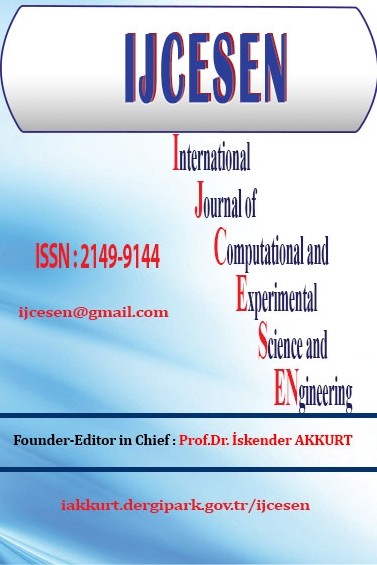(IJCESEN)
Measurement of initial soil moisture conditions for purposes of rainfall simulation experiments
The research on rainfall-runoff processes has become even more important in recent decades with respect to both flood and drought events as well as to expected impacts of considered climate changes. It is researched in different ways and at different scales according to the purpose. The rainfall simulator developed at Department of Irrigation, Drainage and Landscape Engineering is being used for purposes of detail analysis of rainfall-runoff process in order to research infiltration process which is straight related to retention of water in soil profile. It is necessary to measure initial soil moisture content as well as soil moisture content after the simulation for this purpose. Standard way to do it consists in taking undisturbed samples and analyzing them using gravimetric method which is considered as a direct way to do it. However, this way is time consuming and do not provide instant data. It is therefore considered as a good option to use sensors measuring soil moisture content indirectly using different sensors. The application of Theta Probe ML2x has been tested for this purpose because it would be an easy to use device providing instant data. As reference, gravimetric method and TOMST TMS3 sensors were used because gravimetric method is assumed to be the most precise way to measure soil moisture content and TMS3 sensors were in detail tested in laboratory of Department of Irrigation, Drainage and Landscape Engineering. The results of testing were analyzed using statistic measures and are presented in this paper together with the evaluation of data obtained during the simulation experiment. The results indicate reasonable results obtained by both considered types of sensors which are slightly better for TMS3 sensor.
___
- ASTM, Standard test method for determination of rolled erosion control product (RECP) performance in protecting hillslopes from rainfall-induced erosion. D 6459-07. American Soc. of Testing and Materials, West Conshohocken, PA, (2007).
- Gyssels, G., Poesen, J., Bochet, E., & Li, Y. Impact of plant roots on the resistance of soils to erosion by water: a review. Progress in Physical Geography, (2005), 29.2: 189-217.
- Miller, J. D., and G. J. Gaskin., ThetaProbe ML2x: Principles of operation and applications, MLURI Tech. Note (1996).
- Morgan, R. P. Ch., Soil erosion and conservation. John Wiley & Sons, (2009).
- Wischmeier, W. H., Smith D. D., Predicting rainfall erosion losses – a guide to conservation planning. AH 537. USDA, Washington, (1978).
- Krasa, J., Empirical models of water erosion in the Czech Republic – tools, data, options and calculation risks, Habilitation theses. Prague. CTU Prague, Faculty of Civil Engineering: 159 (2010)( In Czech)
- Kavka, P., Davidová, T., Janotová, B., Bauer, M., Dostál, T.: The Mobile Rainfall Simulator - Construction and First Testing. Stavební obzor. (2012), roč. 21, č. 8, ISSN 1210-4027. (in Czech).
- Šanda, M., Haase, T., Wild, J., Jankovec, J. TMS3: Temperature and moisture system for spatially distributed measurements. 15th Biennial Conference of the Euromediterranean Network of Experimental and Representative Basins, 9-13 September 2014, p. 28.
- Yayın Aralığı: 4
- Başlangıç: 2015
- Yayıncı: Prof.Dr. İskender Akkurt
